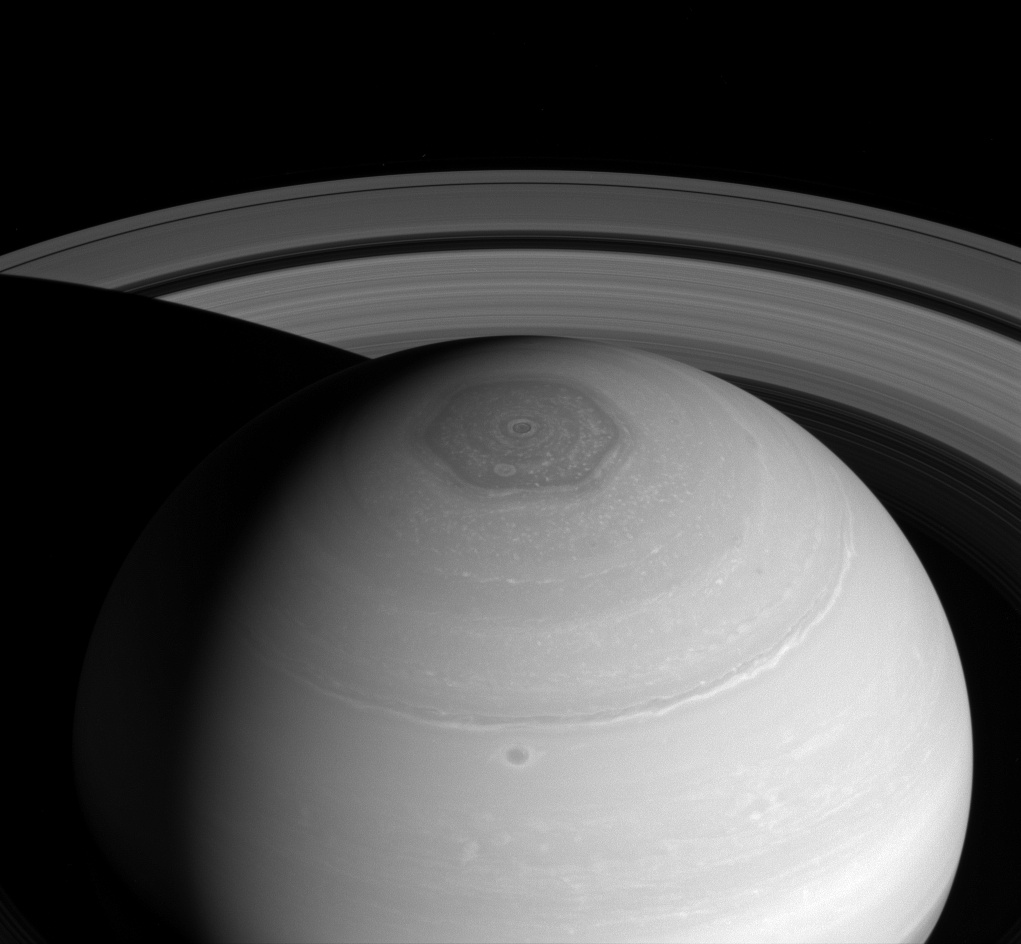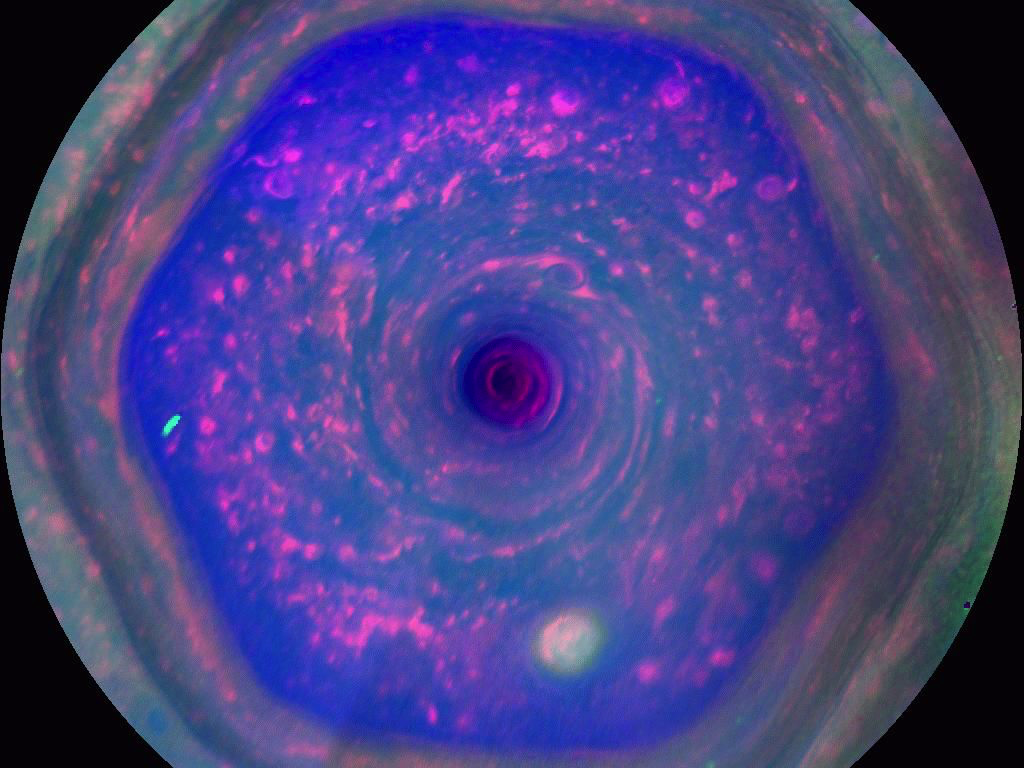User:Tohline/Appendix/Ramblings/Saturn
Saturn
Here we draw heavily from the review by L. Spilker (14 June 2019) titled, Cassini-Huygens' exploration of the Saturn system: 13 years of discovery that has appeared in Science, Vol. 364, Issue 6445, pp. 1046 - 1051. This review reminds us to emphasize that, although virtually all of the chapters of our H_Book have been written from the standpoint of analyzing the structure, stability, and dynamics of stars, much of our discussion is applicable in a fairly straightforward manner to studies of planets — especially the gas giants — because they are also self-gravitating fluids.

|
|---|
| | Tiled Menu | Tables of Content | Banner Video | Tohline Home Page | |
Structure and Stability
Excerpt from the first paragraph on p. 1050 of L. Spilker (2019):
|
Saturn's ring system acts like a seismograph, providing a measure of Saturn's internal oscillations (or normal modes) that directly probe the interior of the planet … and provide a means for measuring its deep rotation rate. These vibrations, determined by Saturn's nonuniform internal structure, are probably driven by convection inside the planet, which cause oscillations in Saturn's gravity field … Preliminary modeling of the propagation behavior of this collection of waves provides an interior rotation rate for Saturn of ∼ 10.6 hours … |
Excerpts from the article by L. Iess et al. (2019), Science, Vol. 364, Issue 6445, p. 1052 titled, Measurement and implications of Saturn's gravity field and ring mass:
|
… the mass distribution inside a fluid and rapidly rotating planet like Saturn is largely driven by the ratio between centrifugal and gravitational forces. In static conditions, the planet should rotate uniformly and its gravity field should be axially and hemispherically symmetric and thus described by zonal harmonics.
|
Hexagon Storm
Image on the Right: obtained from this NASA/JPL site; image on the Left: obtained from this NASA Newsletter. See also the wikipedia page titled, Saturn's hexagon.
| FIGURE 1 | FIGURE 2 |
|---|---|
Post Cassini
Binary Mass-Transfer
Several key references:
- [Paper DMTF (2006)] M. C. R. D'Souza, P. M. Motl, J. E. Tohline & J. Frank (2006), ApJ, 643, p. 381: Numerical Simulations of the Onset and Stability of dynamical Mass Transfer in Binaries
- [Paper MFTD (2007)] P. M. Motl, J. Frank, J. E. Tohline & M. C. R. D'Souza (2007), ApJ, 670, p. 1314: The Stability of Double White Dwarf Binaries Undergoing Direct-Impact Accretion
- [Paper MFSCFEDT (2017)] P. M. Motl, J. Frank, J. Staff, G. C. Clayton, C. L. Fryer, W. Even, S. Diehl & J. E. Tohline (2017), ApJSuppl., Vol. 229, Issue 2, article id. 27, 41 pp.: A Comparison of Grid-based and SPH Binary Mass-transfer and Merger Simulations
| FIGURE 3: Nonlinear-Amplitude Distortions that Develop in Three Separate Model Evolutions | ||
|---|---|---|
| Evolution A | Evolution B | Evolution C |
|
MFTD (2007) |
MFSCFEDT (2017) |
MFSCFEDT (2017) |
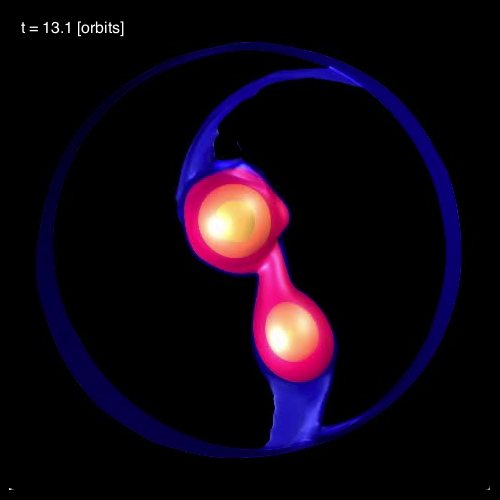 |
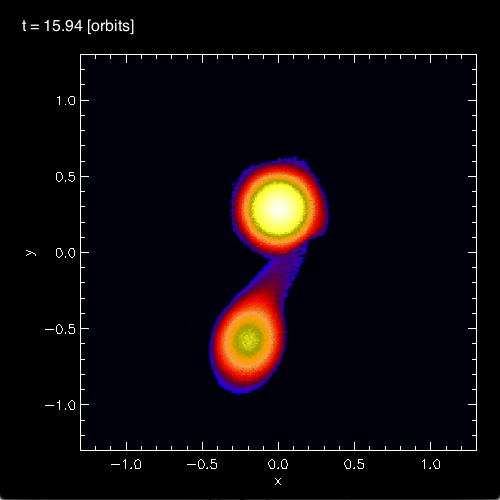 |
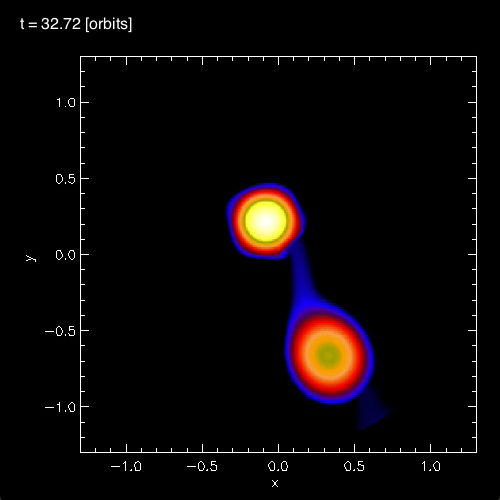 |
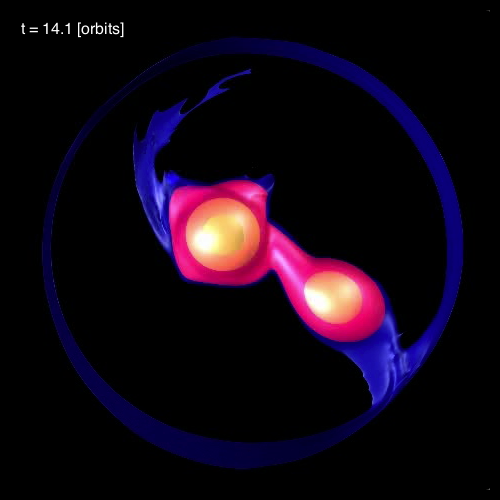 |
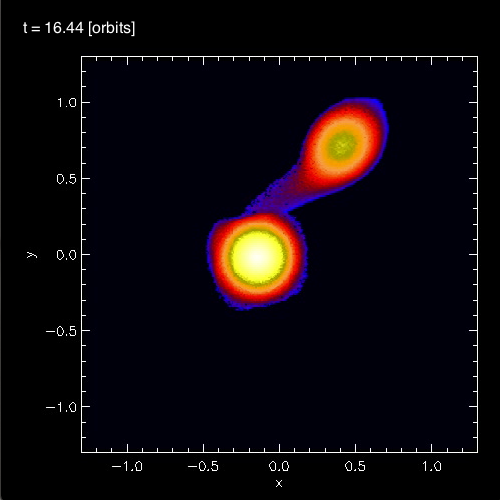 |
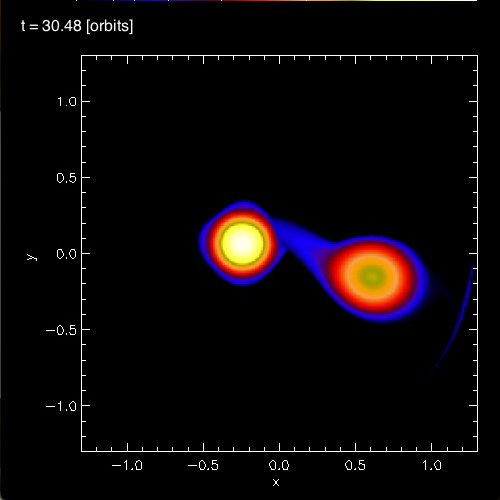 |
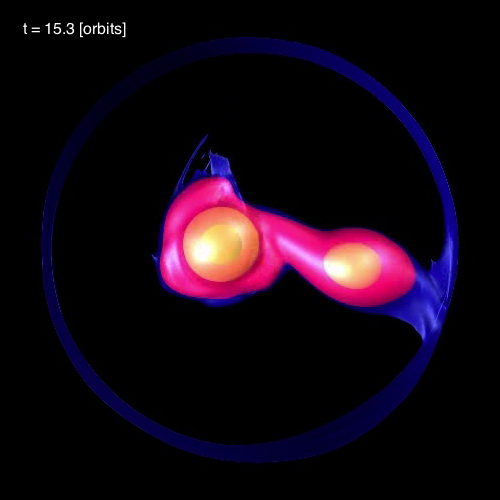 |
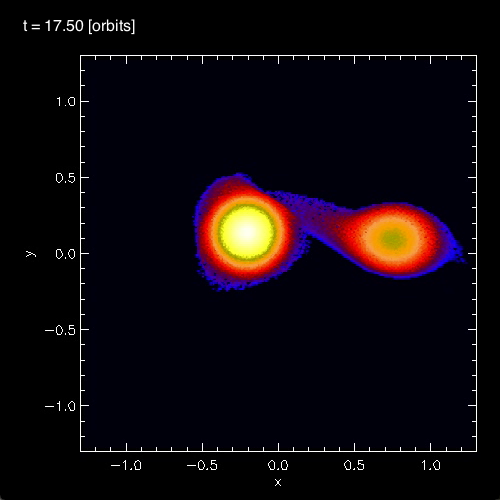 |
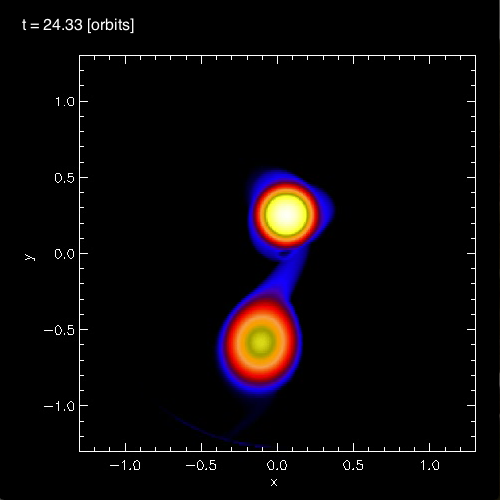 |
| †The evolution identified here as Model Q0.5P_G1 was first discussed in §5.2 of DMTF (2006), wherein it was identified as Model Q0.5-Da; the caption to Figure 7 of that paper contains a link to an (mpeg_file = video3-2.mpg) animation that presents a 3D rendering of this model's evolution. | ||
The following discussion has largely been extracted from §3.1.4 of MFSCFEDT (2017):
|
In §4 of their paper, MFTD (2007) point out that in the vicinity of the accretor some of the models developed nonlinear-amplitude "equatorial distortions with [azimuthal mode numbers] <math>~6 \ge m \ge 3</math>." As is illustrated by the trio of images displayed in the bottom row of Figure 3, above, at a certain point (or points) in each of these binary mass-transfer evolutions … the disk surrounding the accretor has a triangular shape … This trio of triangular shaped images come from, respectively, evolutionary times: (A, B, C) = (15.3, 17.50, 24.33), as measured in terms of initial orbital periods. |
Related Discussions

|
|---|
|
© 2014 - 2021 by Joel E. Tohline |
